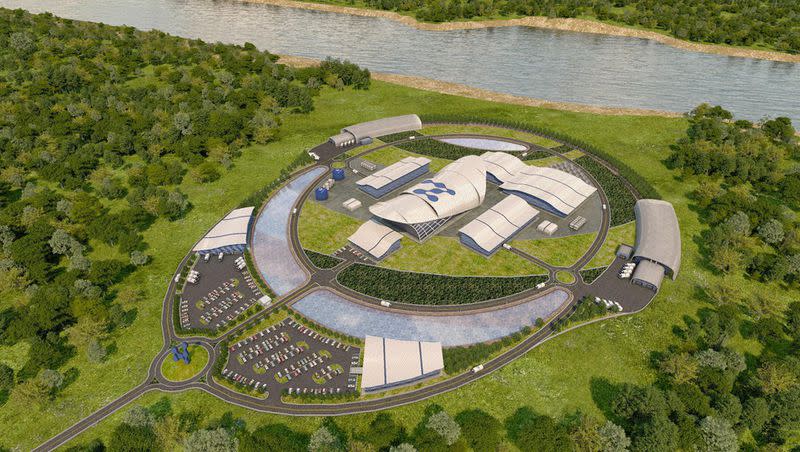Utah just lost an important future energy source. Here’s why

The Carbon Free Power Project pursued by the Utah Associated Municipal Power Systems to deliver nuclear power as a base load energy source to some Utah municipalities and districts and others is officially dead.
The Utah Associated Municipal Power Systems and NuScale announced Wednesday they have mutually agreed to terminate the project.
Despite significant efforts by both parties to advance the project, the two said it appears unlikely it will have enough subscription to be viable.
“Through our work with UAMPS and our partnership with the U.S. Department of Energy, we have advanced our NuScale Power ModulesTM to the point that utilities, governments and industrials can rely on a proven small modular reactor technology that has regulatory approval and is in active production,” said NuScale President and Chief Executive Officer John Hopkins. “NuScale will continue with our other domestic and international customers to bring our American small modular reactor technology to market and grow the U.S. nuclear manufacturing base, creating jobs across the United States.”
Related
UAMPS’ Chief Executive Officer and General Manager Mason Baker said the decision is disappointing given the hard work and time invested to provide a stable source of base load carbon-free power for its customers given the escalating pressure to shutter coal-fired power plants in an atmosphere hyperfocused on climate change.
“Yet, this decision is the best course for the UAMPS members participating in the (project) and doing what is best for those member communities will always be the guiding light in such decisions,” Baker said. “We have learned many invaluable lessons during the development of the project that we will carry forward in future development work to meet the future energy needs of the UAMPS member communities.”
As the permitting dragged on and costs became more uncertain, especially highlighted by critics of nuclear power who railed on the “unproven technology,” subscribers began to drop out via off-ramps deliberately built into the subscription program to allow a seamless exit if nuclear power as part of their portfolio looked untenable.
Related
Critics of planned nuclear power project urge Utah cities to pull out before it’s too late
Two more cities opt out of nuclear power project planned in Idaho
Northern Utah city opts out of planned nuclear power project over money concerns
The small modular reactor technology planned to be deployed by NuScale, a U.S. company, envisioned six modulars cooled by a pressurized loop of water to deliver 77 megawatts each to produce a combined 462 megawatt hours of electricity per year. It is the first and only advanced small modular reactor technology to receive a design certification of approval from the U.S. Nuclear Regulatory Commission.
The approval process took years and cost hundreds of millions of dollars of investment by NuScale. Additionally, the project enjoyed bipartisan support from three U.S. presidential administrations with more money pumped into its success by the U.S. Department of Energy.
Still, it was not enough.
NuScale has pursued and secured contracts or memorandums of understanding with other countries around the globe to install this next generation technology.
The Idaho National Laboratory, the U.S. Department of Energy’s leading nuclear research facility, was slated to take power from the project as well.
Related
Baker, in an exclusive interview with the Deseret News, said the decision to terminate the project was reached via consensus with the 27 members of UAMPS who had remained on board with the Carbon Free Power Project, as well as NuScale.
The project needed to have an 80% subscription rate, an internal decision made by the municipal power coalition and NuScale to remain financially viable, and it did not meet that threshold.
“So we wanted to make sure that we were going to have that level of subscription and, again, we have come to the determination that we’re not going to achieve that level of subscription so we think it’s best to terminate the project.”
“To say it is a disappointment is a huge understatement,” Baker said.
In the interim, UAMPS will continue to explore base load power sources as an alternative to coal, including wind and solar projects of utility scale, geothermal and natural gas plants that use a blend of fuels to lessen their carbon footprint.
One such example is that of the Intermountain Power Project in Delta that ultimately plans to use 70% natural gas with a 30% infusion of hydrogen.
“There’s not truly an equivalent substitute for a zero emitting nuclear resource,” Baker said. “So we continue to think long term that nuclear will play a role, but we’re going to in the near term pursue some of these other resources that I just mentioned.”
Baker stressed that nuclear power is not off the table for the long term, given the relationship building that has happened over the last 11 years with NuScale.
“I have seen how they’ve matured the technology, gone through the NRC licensing, and that’s absolutely a big positive for them and for us. We felt like UAMPS in our support of them has helped get them to where they are and also helped the advanced nuclear community move forward,” Baker said. “So we want to continue to see them move forward and I certainly would look at them down the road as an option.”

